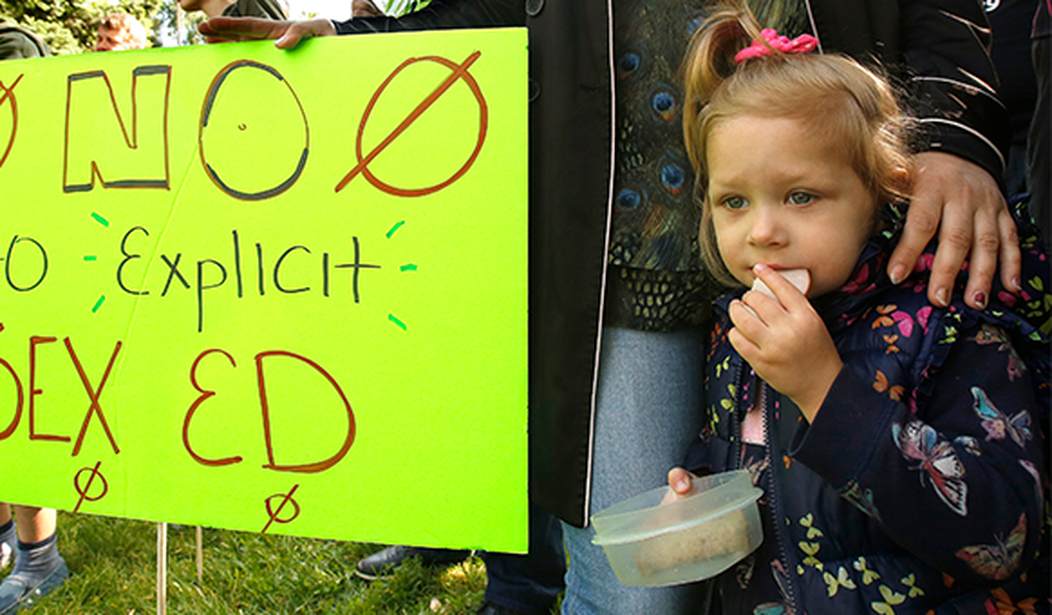There's something seriously wrong with mainstream media outlets like The Washington Post and The New York Times, and I am not talking about a matter of a difference of opinion here, but rather the sexually explicit content they're willing to publish. Over the holiday weekend, I covered an opinion piece from WaPo, "Yes, kink belongs at Pride. And I want my kids to see it." But then NYT published Valeriya Safronova's "A Private-School Sex Educator Defends Her Methods," quite the sympathetic piece to that "sex educator" in question, Justine Ang Fonte.
Pornography literacy classes are supposed to teach students how to critically assess what they see on the screen. But when a sex-positive educator taught her curriculum at two elite New York City schools recently, some parents were outraged.https://t.co/dny3bghY05
— The New York Times (@nytimes) July 7, 2021
Everything about the piece, from its headline, to its subheading, to the tweet and the over 2,600 word piece is in defense of Fonte. It's not just to see who is "defend[ing] her methods," but NYT as well. Remember, folks, I read these pieces in their entirety, so that you don't have to.
After a few fluff paragraphs on Fonte, the piece finally addresses what people are so rightfully outraged about, which is that first graders were learning about masturbation. The defense? The cartoon students were shown doesn't actually use the word:
The material for her first-grade class never used the term “masturbation,” Ms. Fonte said recently. The lesson was about private parts being private and included a cartoon in which two characters use anatomically correct names for their genitals and say that sometimes it feels good to touch them. “It’s OK to touch yourself and see how different body parts feel, but it’s best to only do it in private,” the narrator tells viewers.
The W.H.O. guidelines state that between the ages of 5 and 8, children should learn to “identify the critical parts of the internal and external genitals and describe their basic function” and “recognize that being curious about one’s body, including the genitals, is completely normal.”
Recommended
The outrage on Twitter was strong and swift. Tim Pool, who has worked for VICE Media and Fusion TV, addressed this very point.
She never *said* masturbation
— Tim Pool (@Timcast) July 8, 2021
she just showed a cartoon explaining how little boys and girls could touch themselves for pleasure
see that's *totally* different https://t.co/WI4iBPj2Lz
It's not merely masturbation, but porn, with Safronova herself being so dismissive of children watching porn:
Though classes on literacy in sexually explicit media are not mainstream, many sex educators support them. Parents, policymakers, public officials and health experts have all expressed concern over the unrealistic expectations set by pornography and by the fact that it is a primary source of sex education for many young people.
And while parents may not want to believe that their teenagers are viewing pornography, many of them probably are, on purpose or by accident. A national survey found that the average age of first exposure to pornography was just under 14 for males and just under 18 for females.
Pornography literacy classes teach students how to critically assess what they see on the screen — for example, how to recognize what is realistic and what is not, how to deconstruct implicit gender roles, and how to identify what types of behavior could be a health or safety risk.
Others rightfully took issue with how passive the school seemed to be with the curriculum, as did Dan McLaughlin with Natonal Review Online.
It speaks volumes about the people who run these schools that they did not see the problem. https://t.co/8KMIXnza3G
— Dan McLaughlin (@baseballcrank) July 8, 2021
Yet Fonte had the nerve to lament a "Feeling that she lacked support from Dalton," and thus resigned in early June:
Though Ms. Fonte weathered the recent attacks on her reputation, violent threats in her inbox and the experience of being doxxed, she expressed disappointment with Columbia Grammar and Preparatory School and the Dalton School for not supporting her publicly.
“I wanted to believe that Columbia Prep was a school that was ready to take on these issues in an educational, intellectual way and at least one person at that school trusted that I could do it,” she said. “And I did. But they weren’t ready to back it up, and it cost me my safety.”
This doesn't sound like "she lacked support," though:
In a statement, a representative for Dalton said that Ms. Fonte “helped to develop an exemplary K-12 health and wellness program” and that her work should not be “overshadowed by unwarranted misinformation and hateful rhetoric.”
Nowhere does the piece make it clear or present the faintest proper argument about what is apparently such "hateful rhetoric."
What does not get nearly enough attention, though, is the proper scrutiny of how Safronova's justifies Fonte's methods by other sex educator's standards:
Multiple sex educators interviewed for this article said there was nothing inappropriate about her classes there or at Columbia. All of it was in line with current National Sex Education Standards and the World Health Organization’s International Technical Guidance on Sexuality Education.
The national standards are also used in public schools in New York City, where students in grades 6 through 12 take lessons on sexuality as part of their health education. Parents can opt out of certain aspects of the program.
Modern-day sex education, which Safronova lauds as a matter of "A new kind of sex education" is also concerning:
Ms. Fonte is not an urban outlier. Across the country, priorities around sex education have expanded beyond the prevention of teen pregnancy and sexually transmitted infections to include unhealthy relationships, body positivity, sexual orientation, reproductive justice and gender identity.
National sex education standards issued since 2012 by professionals in the field have called for sex education to be L.G.B.T.Q. inclusive, to be offered from kindergarten through 12th grade, and to be “trauma-informed, culturally inclusive, sex positive, and grounded in social justice and equity.”
Teaching consent from an early age is crucial, today’s sex education experts argue. And in the wake of the #MeToo movement, more and more people agree, said Nora Gelperin, the director of sexuality education and training at Advocates for Youth, one of the organizations responsible for drafting the national sex education standards.
While this doesn't sat it out loud "reproductive justice and gender identity" amounts to the promotion of abortion and the idea that one can identify as a different gender.
Further, one reason why we should all be deeply concerned is the involvement of Advocates for Youth. Samantha Kamman for Live Action News last November did quite the deep dive about the organization and what it promotes.
Their own statements, though, also reflect a political agenda, including and especially a pro-abortion one.
Fonte was not fired. She herself resigned, and then whined like a baby, while NYT has further made her into a martyr. Parents beware, though. For she's got big plans from here:
Ms. Fonte is planning to write children’s books about inclusivity, produce podcasts, give talks in and outside of school settings and consult for TV shows. Doing what she does — teaching — but through other media, she hopes, will help her spread her message far beyond the Upper East Side.
At least we've been warned ahead of time.

























Join the conversation as a VIP Member